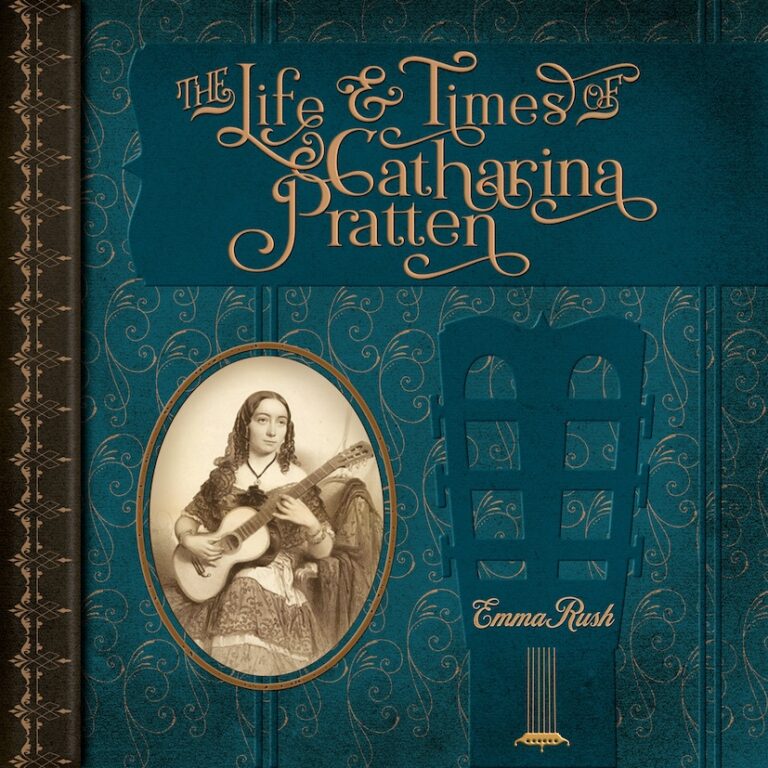This is a guest post by composer Michael Karmon
Visit his site for great info, free scores, and more!
First, a disclaimer: I’m a composer. I do play classical guitar, but all my training and experience is in composition. Also, I’m only going to write about pieces that I really like, and I’m not going to say anything negative about them. It doesn’t mean the music is perfect, but I’m not going to dwell on the shortcomings.
Bryan Johanson is a prolific guitarist/composer that has been teaching at Portland State University for many years. You may have heard his popular Open up your Ears (below), which is inspired by Jimi Hendrix. When I first heard Michael Partington’s wonderful recording (Amazon link) of the 24 Preludes I was struck by the set’s effortless musical flow, and I decided to take a look at the score (Sheet Music Plus).
There are relatively few fingerings, articulations, and dynamic marks in the score. And for the most part textures look quite lean on the page. The music is written very well for the guitar, and I found sight reading to be easy and enjoyable. The preludes are not really easy, and there’s a fair amount of meter changes and rhythmic tricks, but the music flows very naturally and logically. I found it quite easy to step into Bryan’s musical world and flesh out any details that are not explicit on the page.
Most of the preludes are short, and you would think that these would be easy to write, but they actually are not. You still need appealing musical ideas, good ways to develop and support them, and a coherent form. But with short pieces everything is condensed, and you have to be concise and strategic with what you want to say.
There’s a lot of really solid composing technique in these preludes. Number 2, for example, is a series of 8 variations on a descending four-note figure. It is first presented as a sequence, and then with a line of lower counterpoint. As the piece progresses it is gradually expanded, filled in, and transformed. In Number 17 Bryan introduces a repeated sixteenth note figure about a quarter of the way through. It sounds like a natural part of the main idea, but then, toward the end of the piece he returns to this figure and develops it independently. This is a common technique in longer pieces, but in a movement that lasts just over a minute it’s a pretty unexpected device. And it adds to the overall feel of fluid and inevitable musical flow.
A really nice feature of the set is that every prelude in the first half has a companion in the second half. Number 5, which is one of my favourites, is bright, dance-like, and one of the simpler in the set. It starts with natural harmonics that outline the undulating A major and E minor chords that immediately follow, and continues with a short melody to go with these chords. Bryan develops this a bit, repeats some of the music, and ends by introducing an F natural in the bass that sounds very fresh. The companion piece, Number 13, retains the dance feel, the undulating major and minor chords (here G minor and C major), and a similar contour to the melody. But it’s darker, more developed, and more chromatic. It starts fairly brightly, but takes a melancholic turn when the main theme comes in on a g minor chord. The music is developed, pausing on a d-flat major chord, and continues briefly in f-sharp minor before returning to g minor. The recapitulation, or return to the opening material, is followed by a coda with some new fresh ideas. Many of the preludes have nice surprises at the end, by the way, so the endings are never boring.
A few of the pieces are chromatic: Number 14 is kind of a twisted blues, Number 20 is raucous and rhythmic, and Number 7 is slow with really nice chromatic lines and harmonies. But my impression after playing through the whole set is that the freely tonal, fairly mellow music stands out, and sets the tone for the whole piece.
The 24 Preludes make a really lovely set that is very well crafted and expertly written for the guitar. The music is a pleasure to read and play, and is pretty much immediately gratifying.
A big thank you to guest writer Michael Karmon
Visit his site for great info, free scores, and more!





